Creating a solid link building plan can be a very challenging task, especially when you’re uncertain where to start or how to proceed.
In this blog post, I’ll show you my process of creating link building plan, breaking down each step, and providing best practices to craft a powerful link building plan that drives SEO success and propels your website’s authority.
Let’s begin to improve your online visibility and outpace competitors.
Step #1: Backlink Audit
A backlink audit is often less talked about when preparing link building plan.
However, it’s a crucial first step that allows you to analyze the health status of your backlink profile and forms the basis for a robust link building plan.
Without an effective backlink audit, you may overlook vulnerabilities such as a negative SEO attack or a loss of ranking and traffic.
But what exactly is a backlink audit? Essentially, it’s a thorough examination of the total number of backlinks (external websites linking to your website) you currently have.
This examination assesses not just the quantity, but also the quality of these backlinks.
Using a tool like SE Ranking Backlink Checker, you can examine these metrics visually on a graph of Total Referring Domains and Total Backlinks. This can give you an immediate sense of your profile’s health and direct your link building strategy accordingly.
Your audit should reveal whether your backlink profile is growing, stagnating, or declining over time.
A growing backlink profile signals to Google that your domain is active, earning brownie points for your SEO efforts.
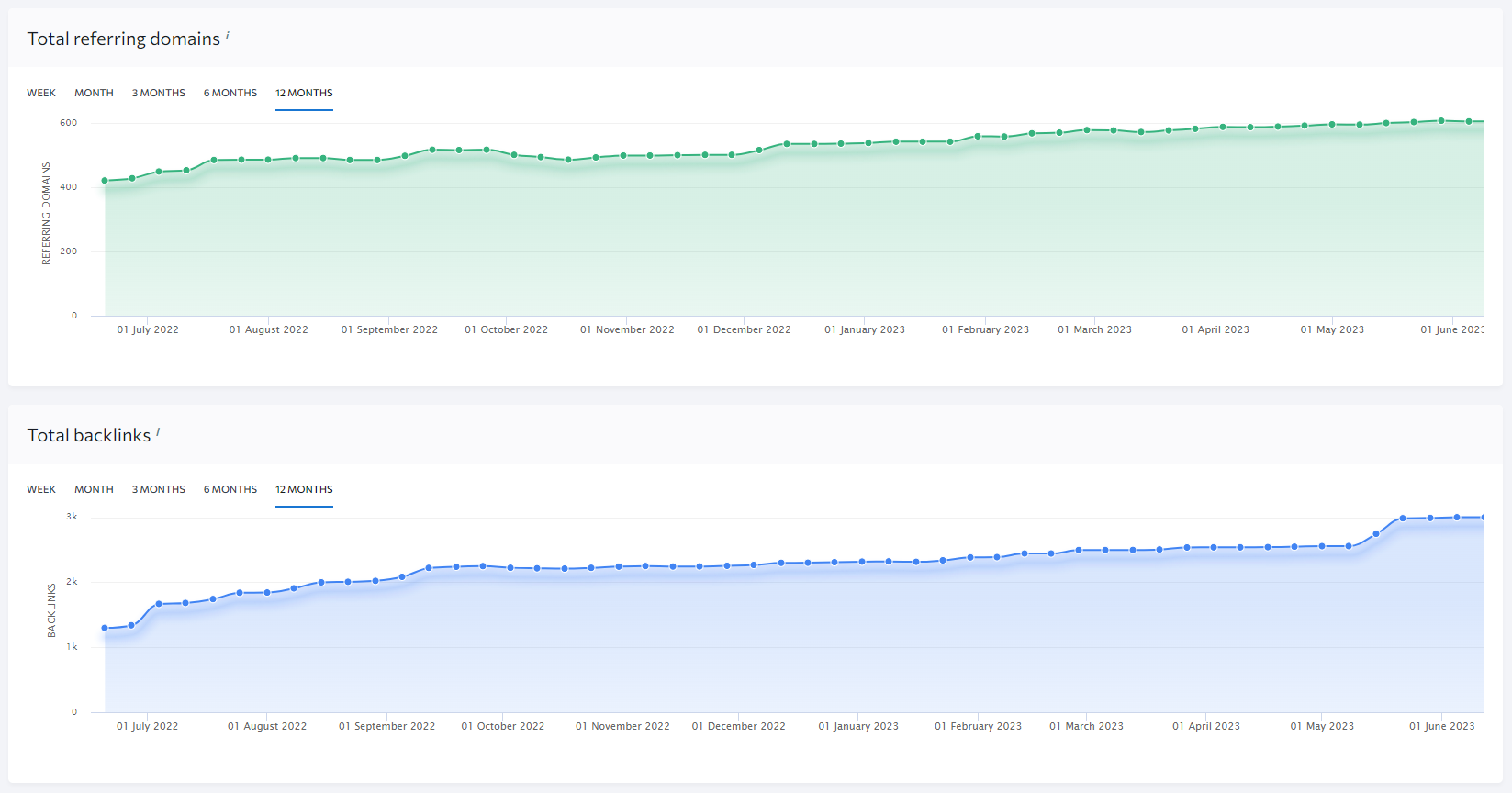
A stagnating profile could imply a less active website.
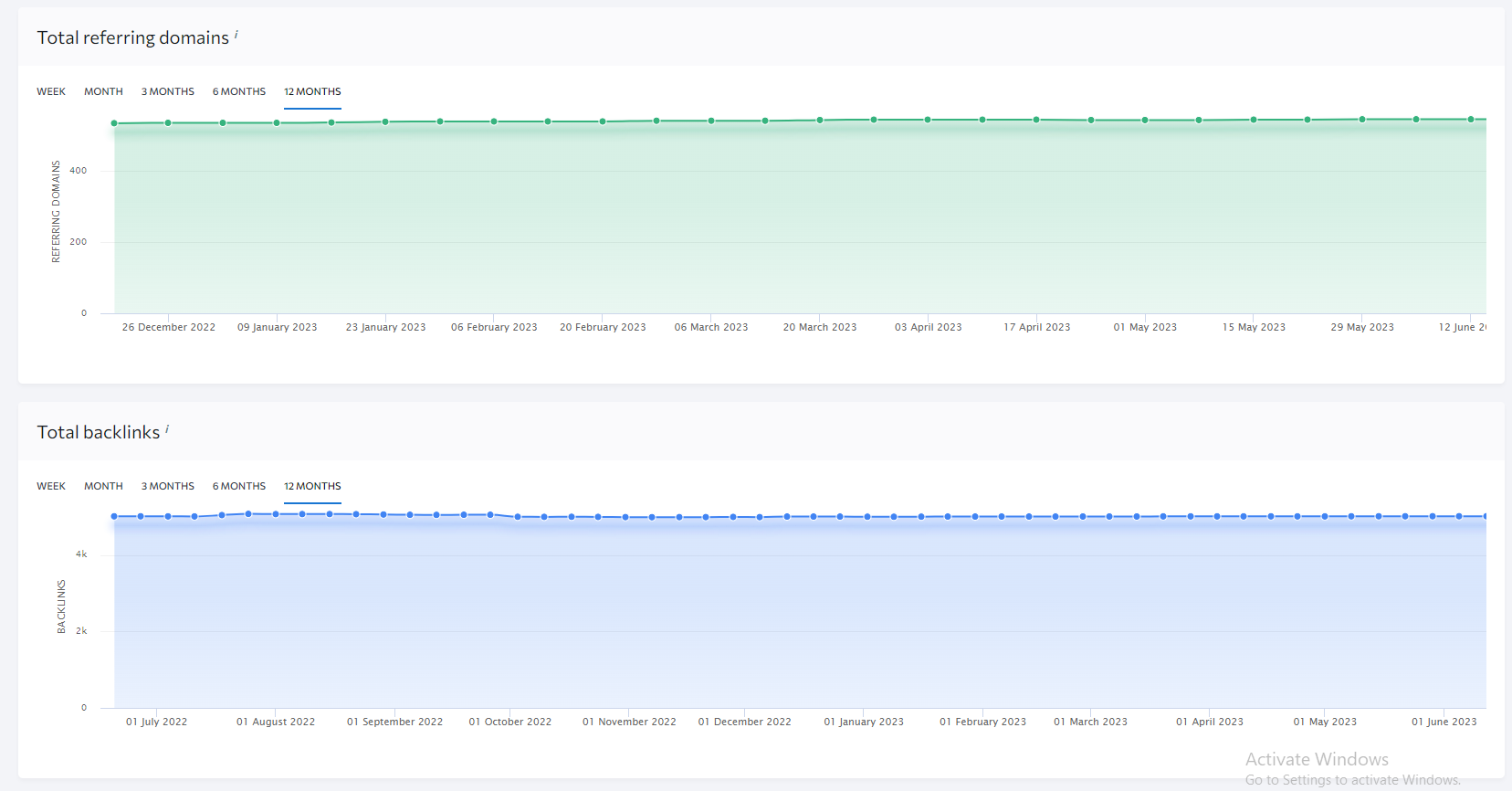
While a declining profile might suggest a dying or inactive website.

Another crucial aspect to consider is the distribution of these backlinks across your website. Ideally, you want an 80/20 rule to apply: 20% of backlinks leading to your homepage and a whopping 80% pointing to your internal pages.
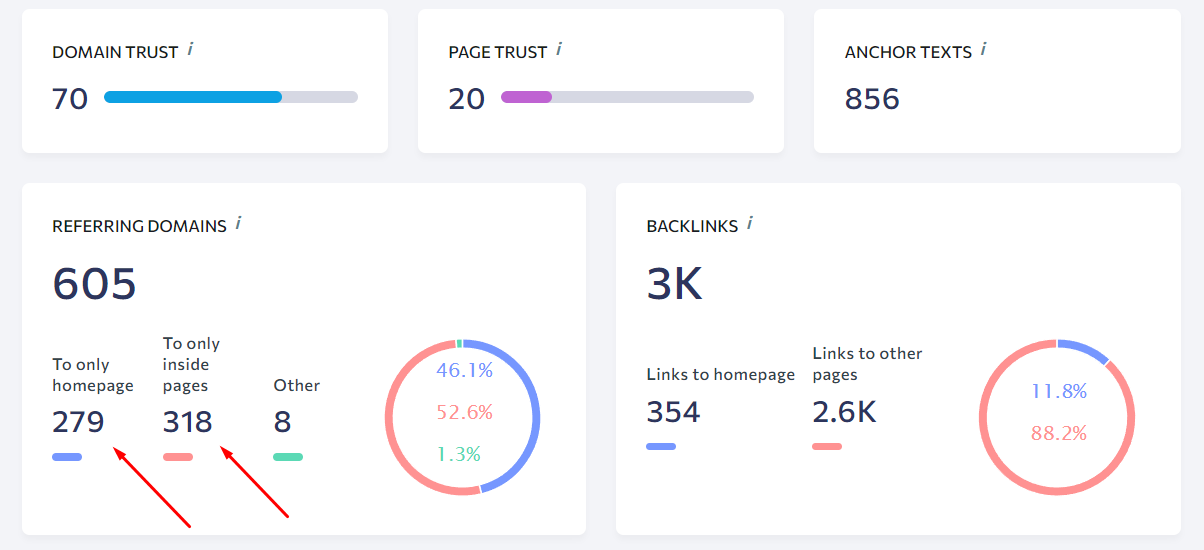
This shows that your website offers value beyond just the homepage, which Google rewards with better search rankings.
Nevertheless, backlink audits can be a complex process, and there’s much more to learn to master it.
In my detailed article on backlink audits, I dive deeper into the ins and outs of this practice.
Remember, high-quality backlinks are the lifeblood of your website’s SEO. Conducting a thorough backlink audit not only ensures these are working for you, not against you, but also lays a firm foundation for a successful link building plan.
Step #2: Competitor Backlink Analysis
Imagine playing chess without observing your opponent’s moves; you’re likely to lose the game.
Similarly, in SEO, Competitor Backlink Analysis is the process of studying your opponent’s moves. It involves understanding where your competitors are earning their backlinks from, the quality of these backlinks, and how their SEO strategy is propelling their ranking on search engines.
Why is it important?
Just as understanding chess moves helps you develop counter-strategies, a backlink analysis of competitors informs your SEO strategy. It helps you uncover new link building opportunities, identify patterns in your industry, and ultimately compete on a level playing field.
With that kickstart your Competitor Backlink Analysis, and identify your top 10 competitors that excel in SEO. These could be fellow SaaS providers listed on G2, service providers featured on Clutch, or companies listed in other relevant directories or associations.

The key is to identify competitors who share your industry and SEO ambitions.
Once you’ve curated this list, it’s time to dive deeper. Are these competitors truly excelling in SEO? To answer this, leverage tools like SE Ranking’s Competitive Research tool.
They provide a wealth of data on your competitors, from the traffic they’re drawing to the number of keywords they’re ranking for.

Next, evaluate the strength of their backlink profile. How many total backlinks and referring domains do they have? What is their website authority, or Domain Trust? All this you need to analyze.
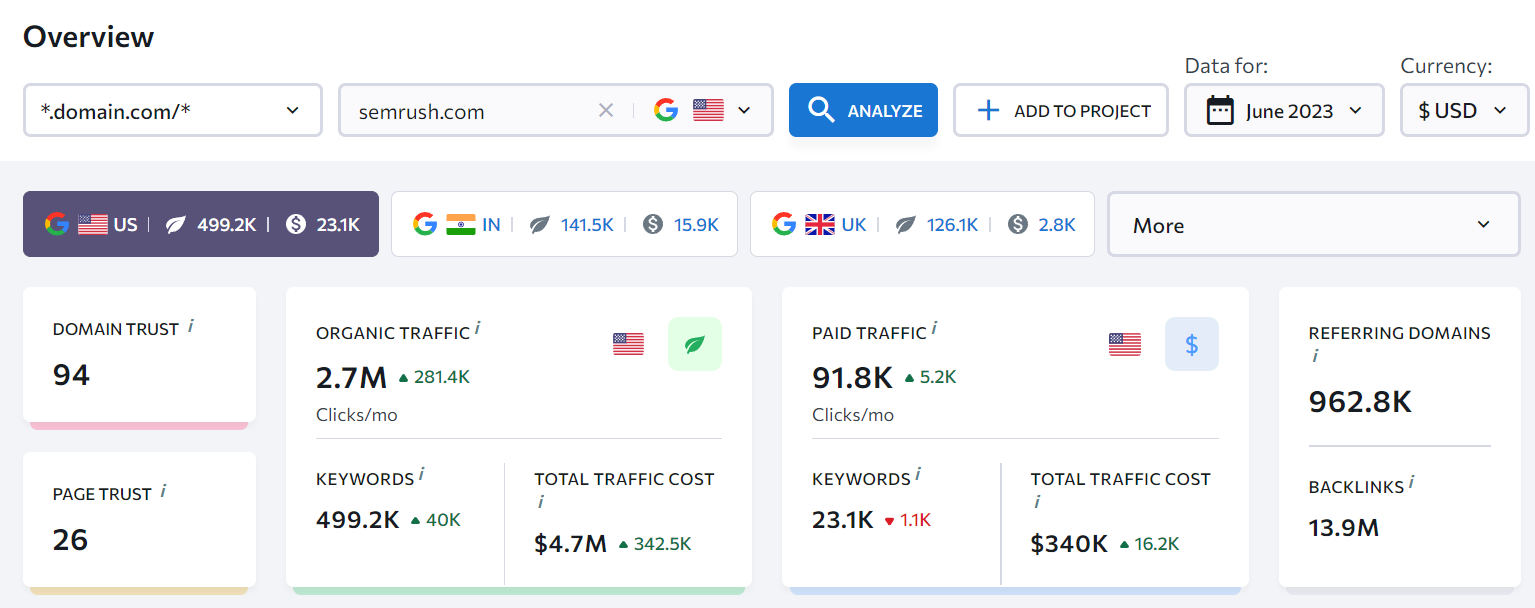
For example, if you are selling ergonomic office chairs and one of your competitors, say “OfficeComfort” is ranking well, dive into their profile. You might discover that OfficeComfort has 34k backlinks, 2.9k referring domains, and a Domain Trust score of 65.
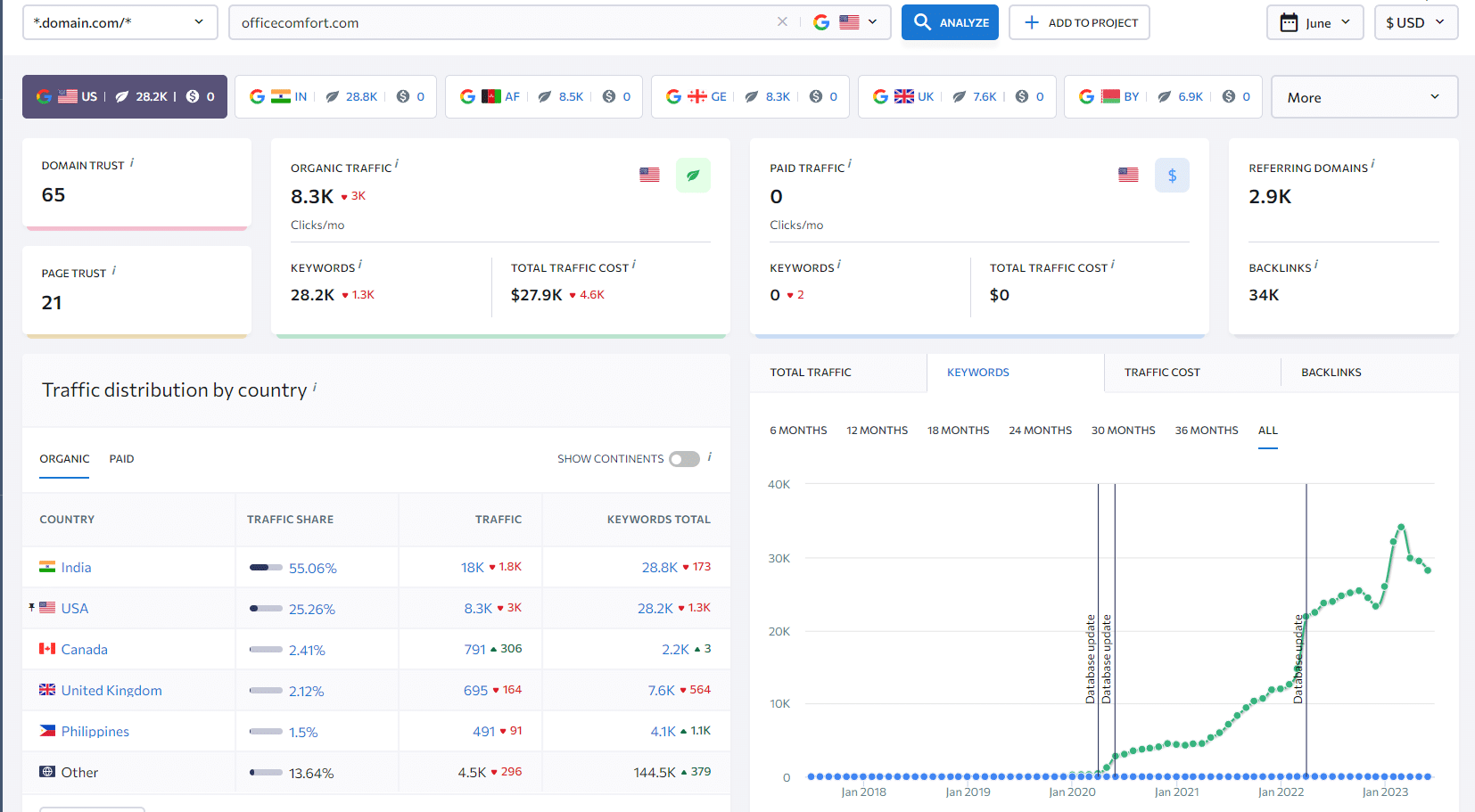
Knowing this information, you gain valuable insights into what it takes to rank well for your specific products or services.
Remember, your aim is to identify the strongest competitors in your industry in terms of their SEO profile, but they should sell similar products/services as you do.
Websites targeting your keywords but offering different services can distort your analysis.
Once you’ve gathered this data, keep track of these competitors regularly. Compare your own backlink and referring domain data, website authority, and ranking SEO keywords with theirs. Tools like SE Ranking’s “My Competitors” feature can be incredibly handy for this ongoing analysis.
Through this detailed competitive analysis, you’ll understand the effort and resources required to compete for the top spot in your niche.
If a competitor’s website authority is above 60, you can anticipate that reaching that level may take a substantial budget (think $10,000s) and a couple of years of committed link building.
But remember, the same steep climb awaits your competitors. Once you reach the top, it becomes significantly harder for others to enter the market and outrank you.
See this not as a cost, but as an investment that solidifies your position in the industry and deters potential competitors.
Step #3: Content Audit & Creation
At the core of every successful link building plan is a strong foundation of valuable and engaging content. This step focuses on conducting a thorough content audit and creating a keyword strategy, both of which are essential components of your link building campaign.
The purpose of a content audit is to evaluate the existing content on your website, identify opportunities for improvement, and ensure that the content is link-worthy.
This is important because a well-rounded link building strategy involves more than just linking to your homepage or product pages.
In fact, excessively linking to these “money” pages can trigger manual action, leading to potential penalties.
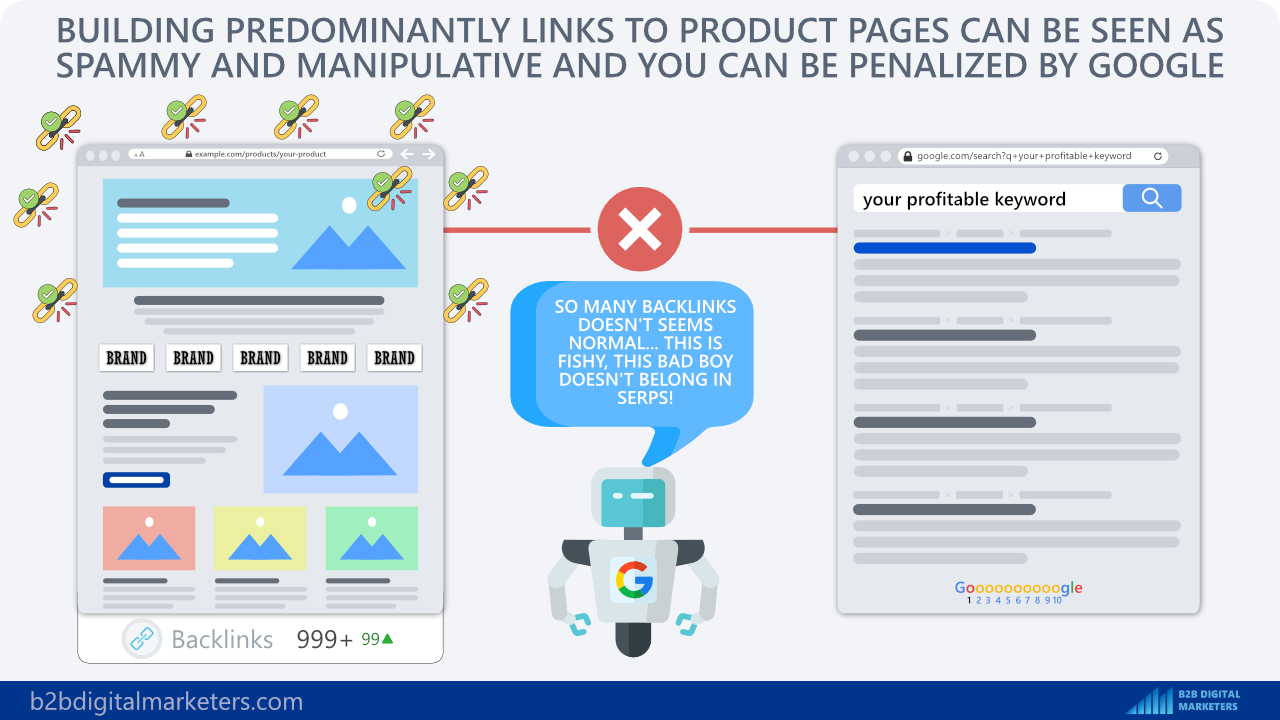
The goal, therefore, is to have a diverse set of content, including blog posts and informational articles, which can serve as the foundation for earning high-quality backlinks and then can pass the link juice to your money pages.
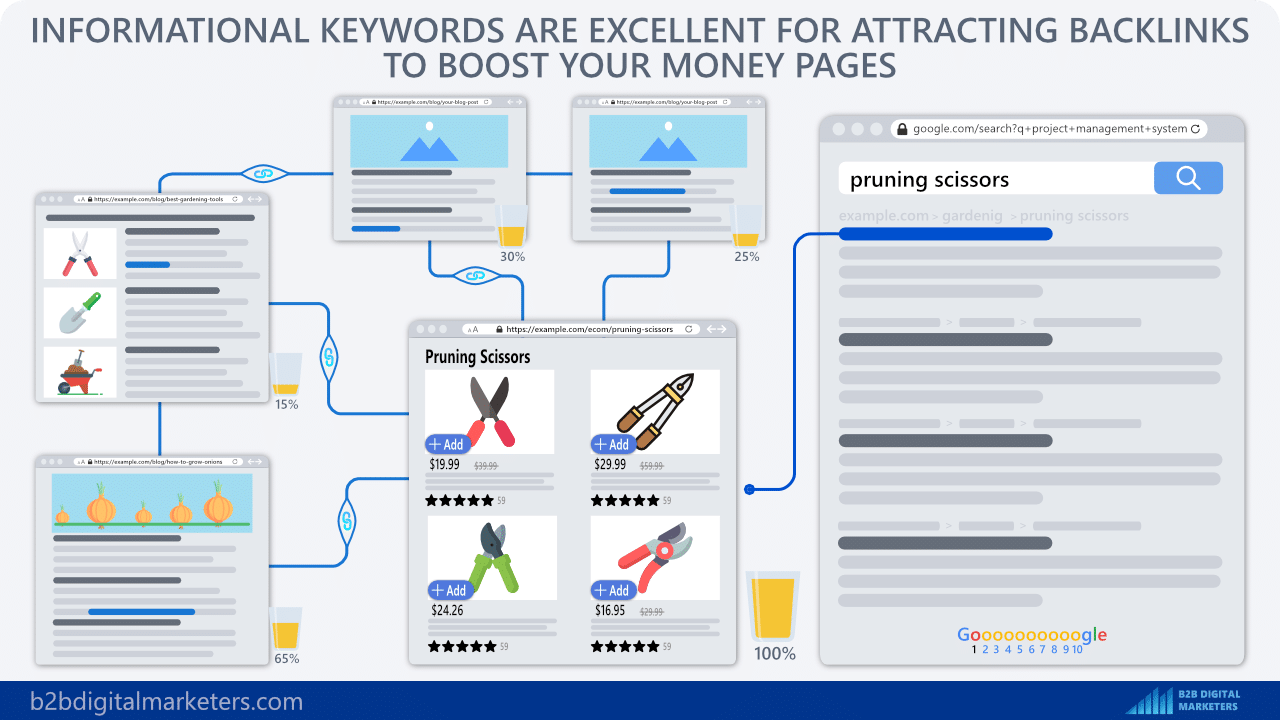
Not only does this help avoid any unnecessary risk, but these types of content also naturally attract backlinks due to their informational value.
Alongside the content audit, it’s important to conduct a keyword audit and keyword research. This involves identifying any keywords you’re already targeting and creating a list of relevant keywords you want to target and build backlinks to.
The right keywords together with backlinks can improve your visibility on search engines, driving targeted traffic to your website.
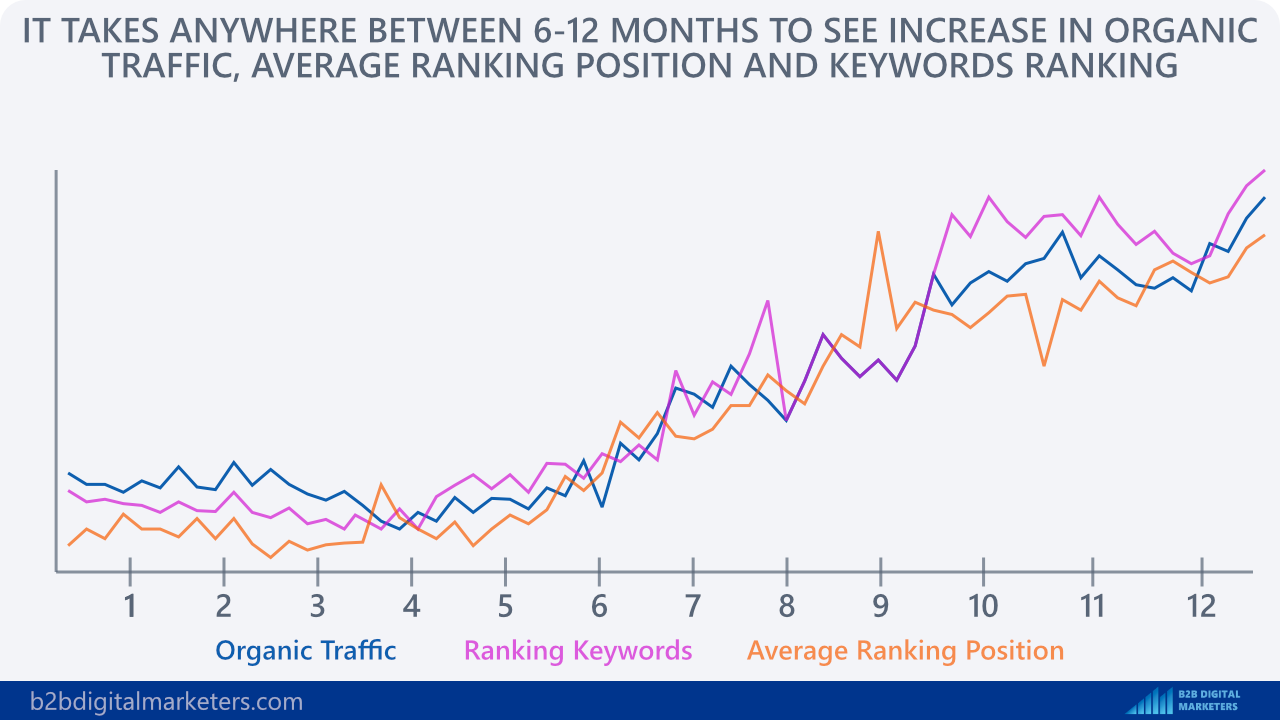
The significance of content and backlinks in SEO cannot be overstated. Google’s ranking algorithm considers both to be primary Google ranking factors influencing a website’s rank on search results pages.
Quality content attracts high-quality backlinks, and these backlinks, in turn, improve the visibility and ranking of your content. It’s a virtuous cycle that underpins successful SEO.
To recap, this step underscores the importance of auditing your existing content and keywords to ensure you have a strong base for your link building plan.
A careful balance of compelling content and strategic keywords is key to attracting high-quality backlinks and improving your website’s SEO performance.
To learn more about this, check out my resources:
- Content Gap Analysis: The Ultimate Guide
- Long-Tail Keywords: 8 Unique Techniques to Find Them
- Primary Keywords: The Guide to Target Main Keywords in SEO
Step #4: Link Building Budget
Starting with link building campaign requires careful budgeting. This financial planning process should be viewed as an investment in your website’s long-term SEO health.
Keep in mind that results from a link building campaign typically materialize between 6 to 12 months, depending on how many backlinks you build and where. So be prepared for this to be an ongoing effort over several years.
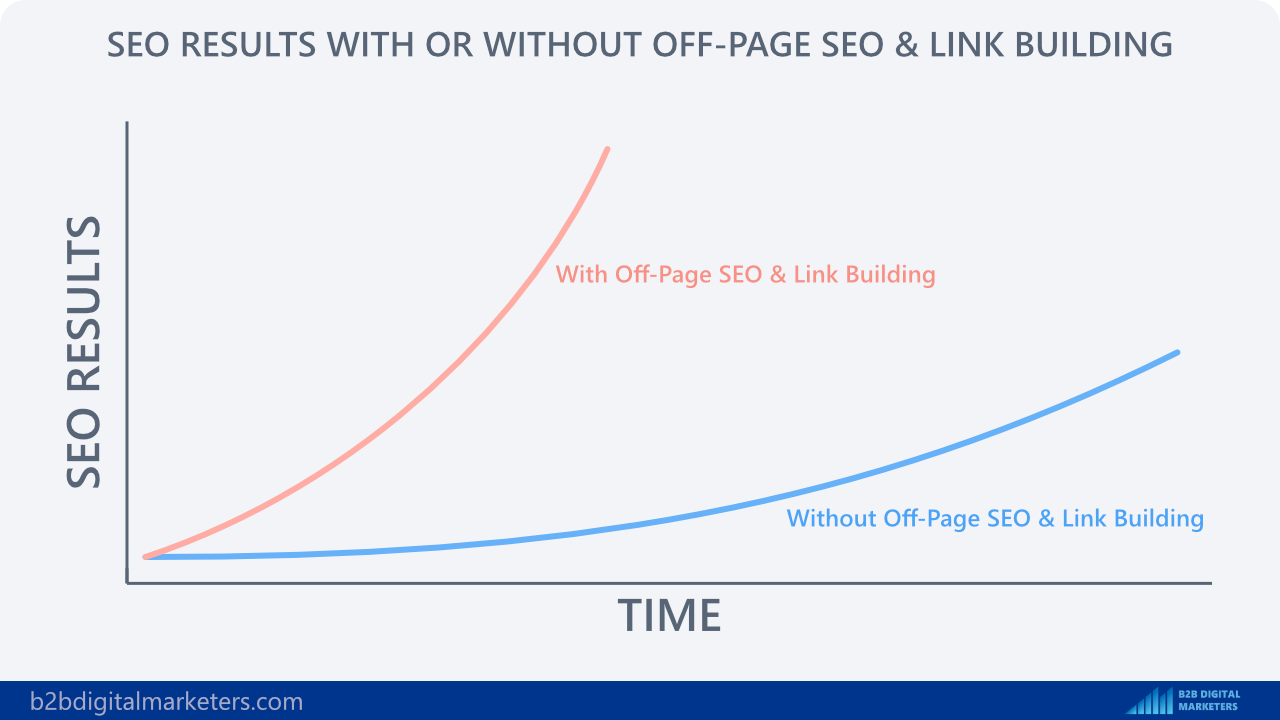
The first step in creating your link building budget involves calculating how many backlinks you can safely build.
As a general guideline, it’s recommended to increase your total backlinks by 0.5% to 1% weekly, based on your total number of referring domains.
For instance, if your site currently has 100 referring domains, you should aim to build approximately one new backlink each week.
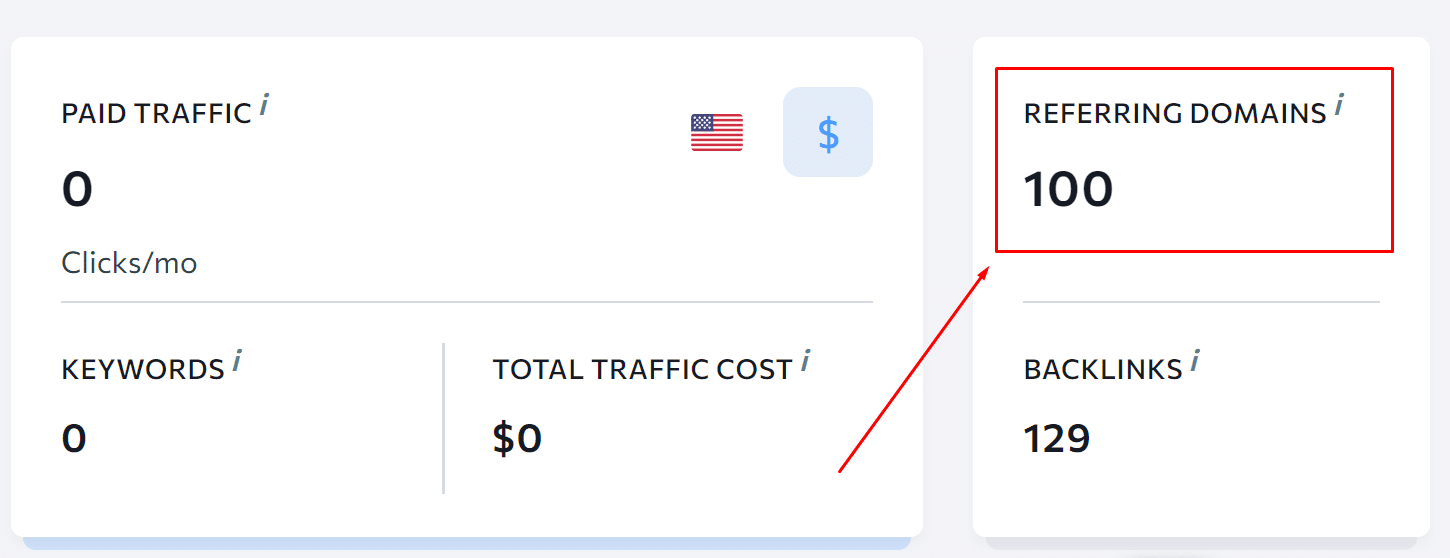
Next, you’ll need to estimate the cost per link. As a beginner, expect to spend around $200-$400 per backlink for good quality links.
As your link building strategy evolves and becomes more sophisticated, you might need to increase your budget to around $500-$1,000 per backlink to get top-quality links that move the needle.

(Source)
Furthermore, you can also analyze your competitors’ backlink profiles to estimate how many backlinks you’ll need.
However, bear in mind that your objective should not merely be to match your competitors’ backlink count.
Instead, aim to consistently build high-quality backlinks at a safe pace (0.5%-1% increase per week, budget permitting).
Over time, you want to have significantly more high-quality backlinks than your competitors, making it both challenging and expensive for them to outrank you.
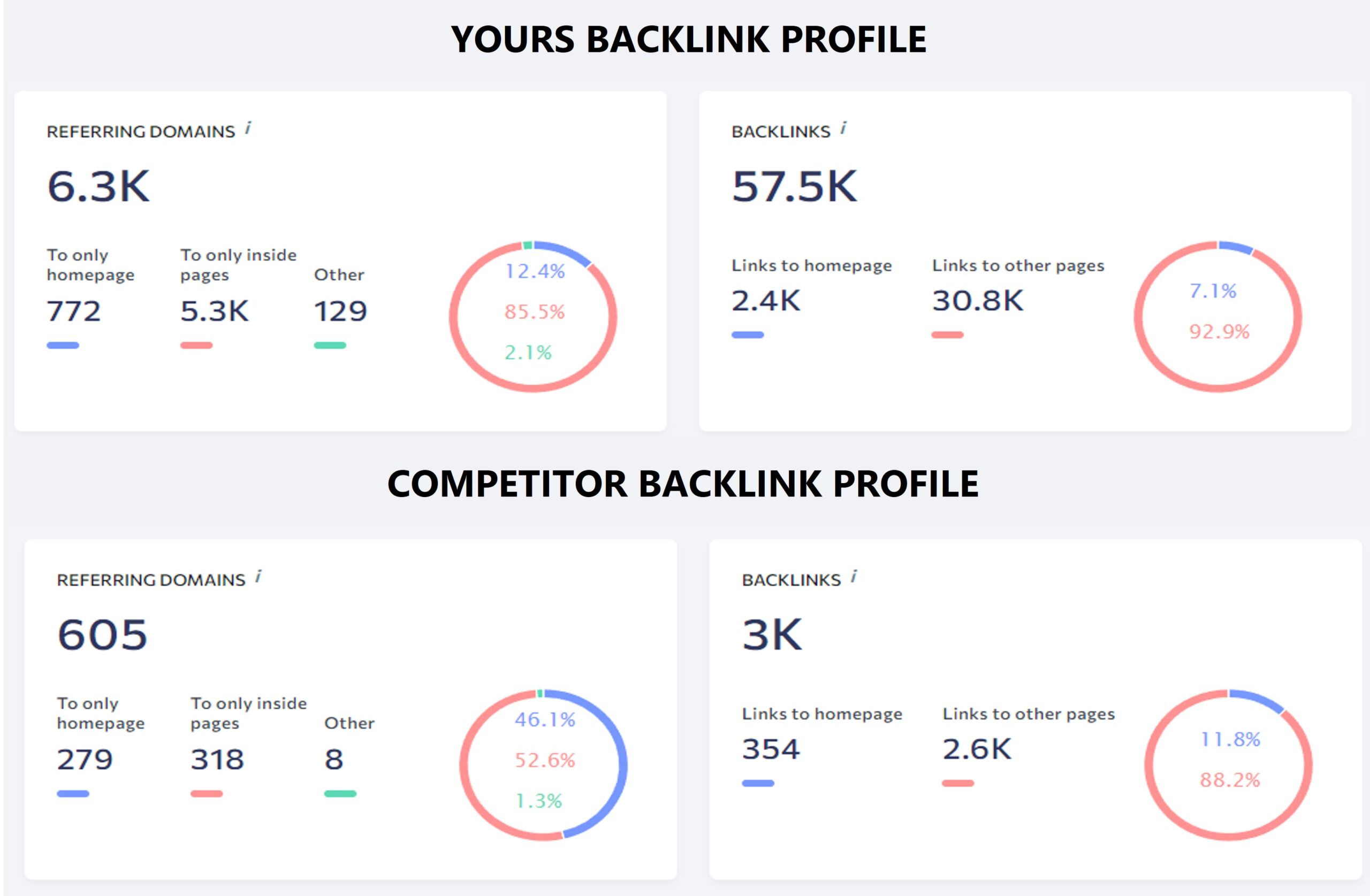
This step illustrates the importance of budgeting in your link building plan. By calculating your safe link growth rate and estimating your cost per link, you can set a realistic and effective link building budget within your link building plan.
Step #5: Selecting Link Building Strategies
Link building isn’t a one-size-fits-all endeavor. Choosing the right strategy depends on various factors, such as your budget, resources, and overall business goals.
This is particularly true when it comes to B2B link building or link building for SaaS, which requires a nuanced approach.
There’s a multitude of link building strategies out there, but for those starting their link building journey, here are five effective approaches that provide a solid foundation:
- HARO Link Building: Standing for ‘Help A Reporter Out’, HARO is a platform that connects journalists with experts in various fields. This strategy is free and can be done yourself. Regularly engaging with queries relevant to your industry could lead to high-quality backlinks from established media outlets.
- Resource Link Building: This strategy involves getting your website listed on resource pages of other sites. The benefits are two-fold: gaining high-quality backlinks and potential leads. This technique provides Google context about your website and improves its understanding of what you offer.
- Guest Posting: Although time-consuming, guest posting is an effective way to gain exposure and earn backlinks. As this process requires a significant time investment, it’s often better to outsource this task while you focus on other SEO strategies.
- Link Insertion: While conducting your outreach, it’s beneficial to request link insertions within existing content. This should represent a small portion of your overall link building effort but can yield valuable results.
- Link Exchange: Another tactic is link exchange – trading a backlink for a backlink. It’s particularly useful when paired with guest posting, allowing you to extract more value from your outreach efforts.
If your budget allows, investing in Press Release SEO such as from Search Intelligence is another viable strategy. Although more expensive, press release backlinks have high authority and can significantly boost your SEO profile.
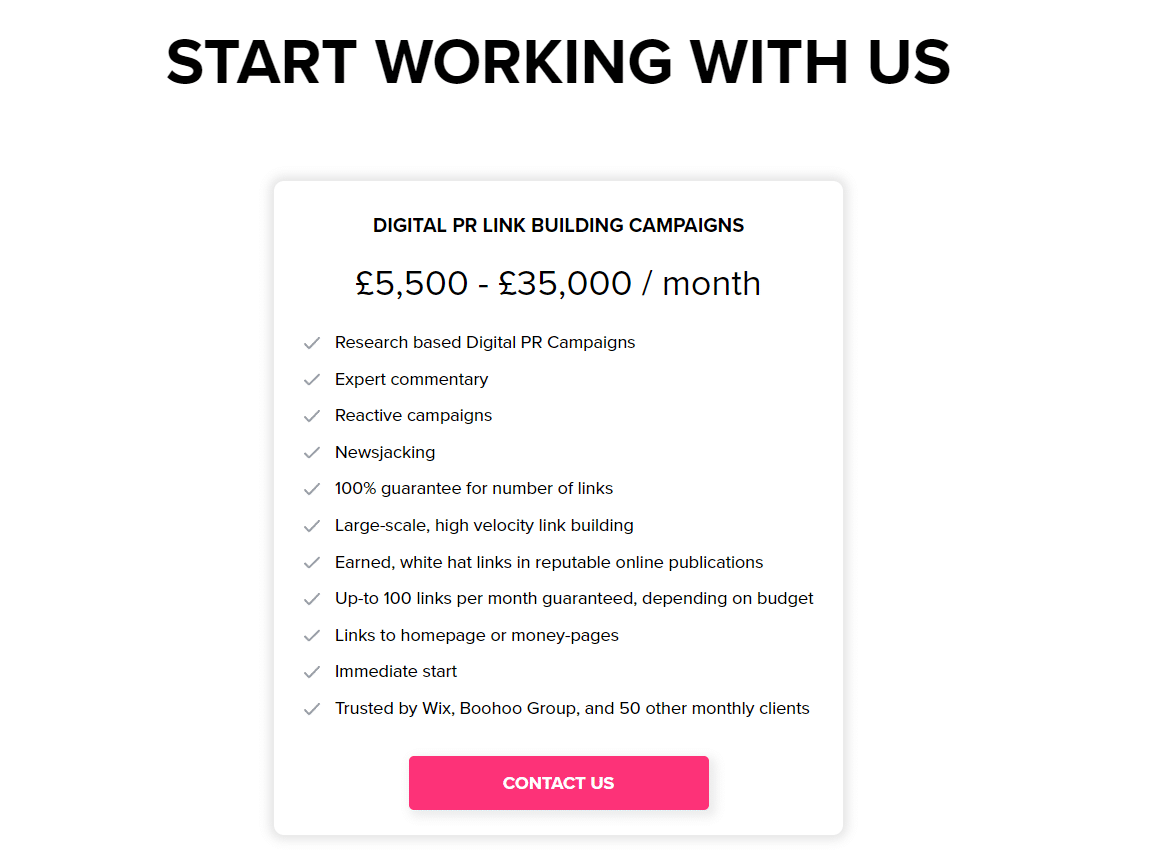
In terms of backlink volume, each of these strategies will contribute differently to your profile. To visualize this better, refer to the following infographic that provides a safe distribution of backlinks for each strategy:
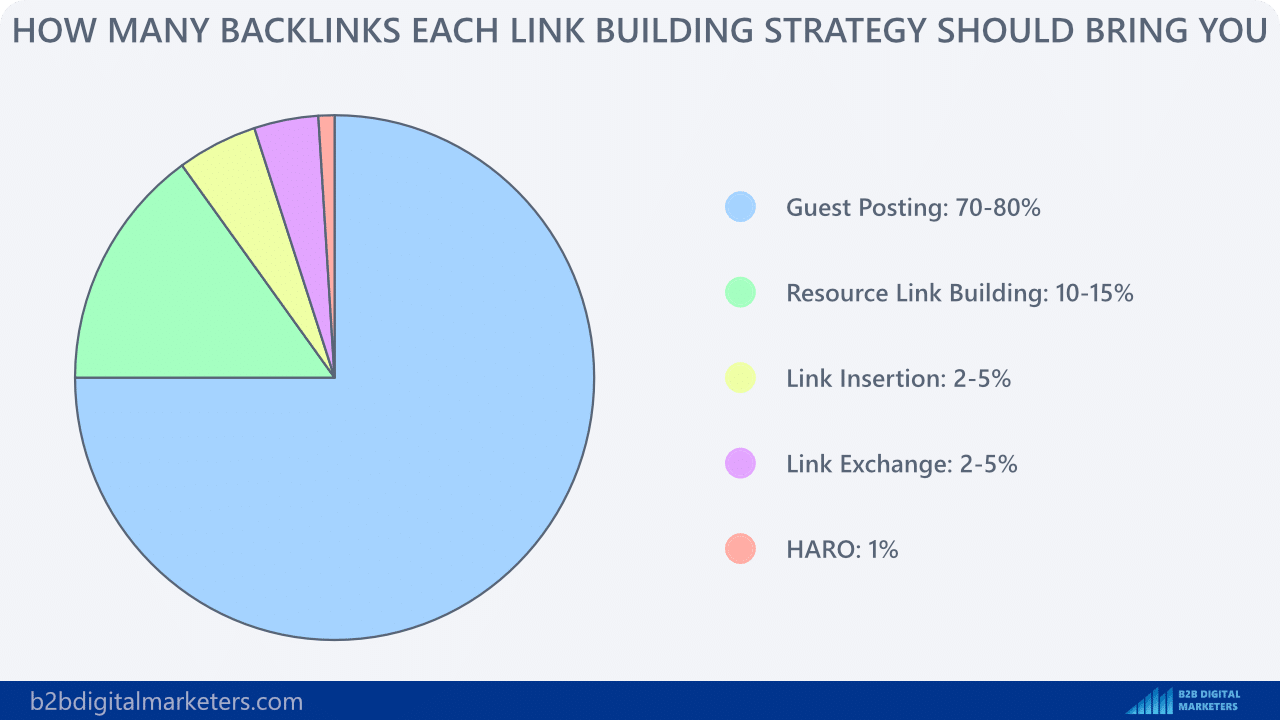
Finally, an often overlooked yet crucial aspect of link building is maintaining a healthy anchor text ratio. Follow the recommended anchor text ratio mentioned below to stay safe:
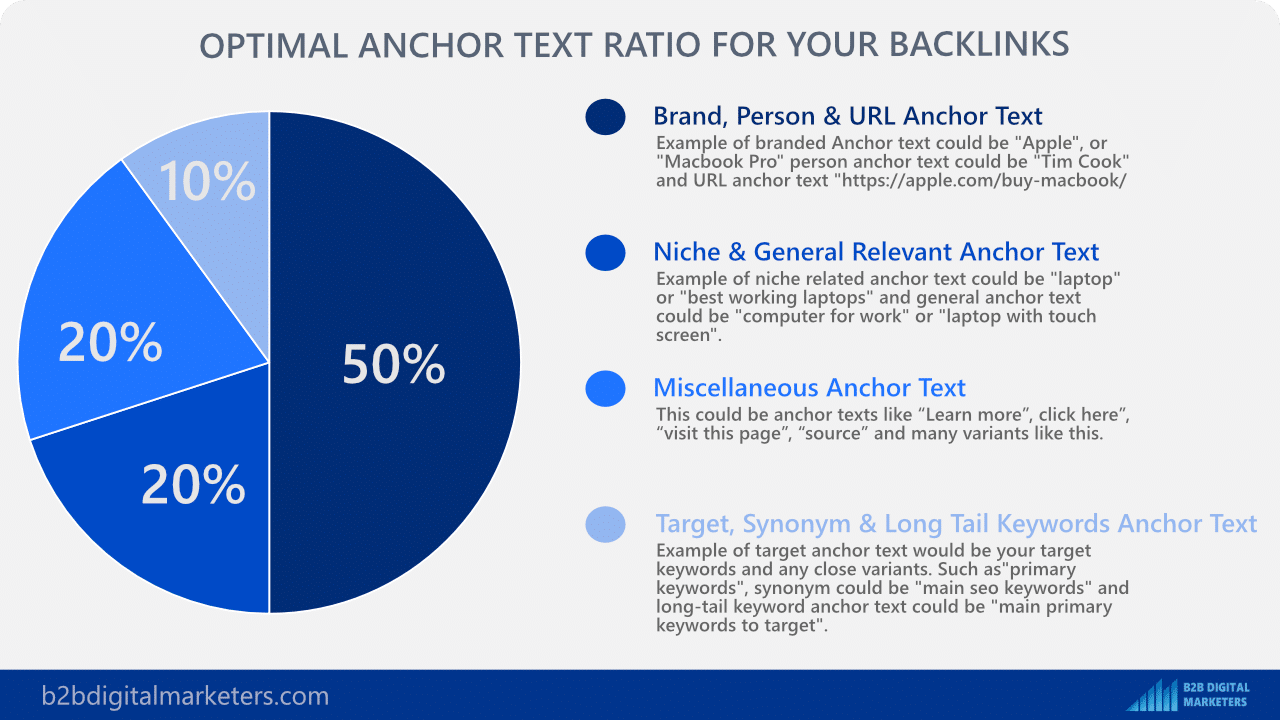
Remember that successful link building requires consistency and patience. Over time, these strategies can significantly improve your website’s authority, relevance, and ranking in search engine results.
Your goal is to build contextual relevant backlinks and niche-relevant backlinks based on your industry or niche.
Last, but not least, definitely avoid these guys offering “high-quality backlinks”!
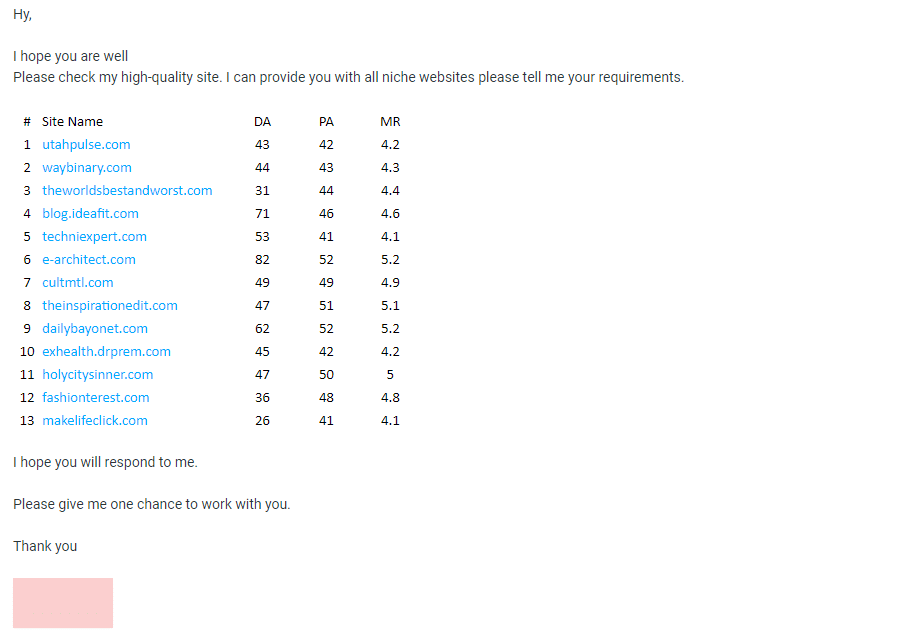
To learn more about this, I recommend visiting my resources on link building I provided to get the best results out of it.
Step #6: Prospecting & Research
To succeed in link building, you need to be both a strategist and a detective. The strategy part includes selecting suitable link building tactics, while the detective work involves finding valuable link building opportunities.
Prospecting and research methods vary depending on the chosen strategy. For instance, sourcing guest posting opportunities is quite different from finding resource link building targets.
To avoid making this article overly long, I won’t delve into these specific processes here. Instead, I suggest you explore my other articles that deep dive into these topics more thoroughly.
One essential element that remains consistent across all strategies is finding contact information to reach out to your link prospects.
This is where tools like Tomba or Hunter come into play. They allow you to search for email addresses linked to specific domains, giving you a direct line to potential partners.

Remember to be professional and considerate when reaching out. Contact only those who are in roles relevant to your request, such as marketing or decision-making roles. You’re not in the business of spamming; you’re a professional who seeks mutually beneficial partnerships.
For small businesses, getting in touch with the CEO or a senior marketing executive might be the best approach. For larger organizations, find a contact who specializes in content, SEO, or partnership development.
In addition to this, you can leverage SEO tools like SE Ranking to find potential link prospects.
By analyzing your website with SE Ranking’s Competitor Research tool and going to the “Competitors” report, you’ll find numerous potential link prospects.
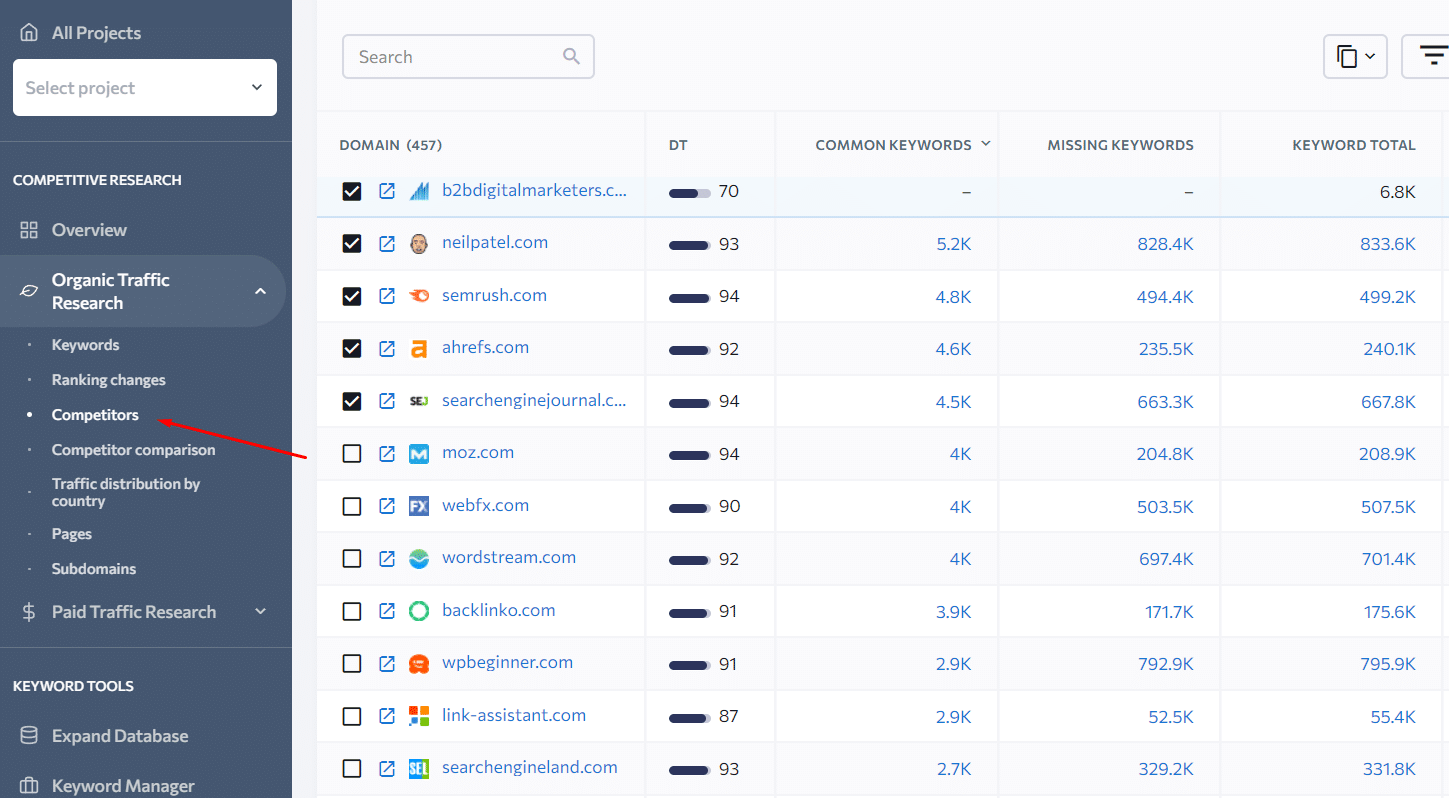
These are companies and websites that compete with you based on ranking keywords. The idea is not to rival them but to forge alliances that would benefit both parties in improving SEO ranking.
The prospecting and research phase can be overwhelming, but remember, it’s a crucial step in crafting a comprehensive link building plan. With the right strategies and tools, you can uncover a wealth of link building opportunities that will boost your site’s SEO profile.
Step #7: Outreach Process – Personalization
Blogger outreach is a delicate dance that requires tact, strategy, and above all, personalization.
It’s the art of crafting an engaging, value-adding message that convinces prospects to consider you.
The type of message and level of personalization depends on your link building strategy, be it guest posting, link insertion, or any other approach.
For a more detailed insight into this, refer to my dedicated link building articles.
Despite the variations in outreach strategies, some universal principles can greatly improve your success rate.
Here’s a set of practices that I personally follow that will help you personalize your outreach at scale and get better results:
- Segment Your Prospects: Divide your prospects into manageable segments based on shared characteristics. This allows you to tailor your approach while reaching out to a larger number of prospects. Typically, I divide my prospects into groups of 10-30.
- Use ChatGPT to Segment Your Prospects: ChatGPT can be a valuable tool to assist with prospect segmentation. You can feed it a list of prospects, and it can provide a logical categorization.
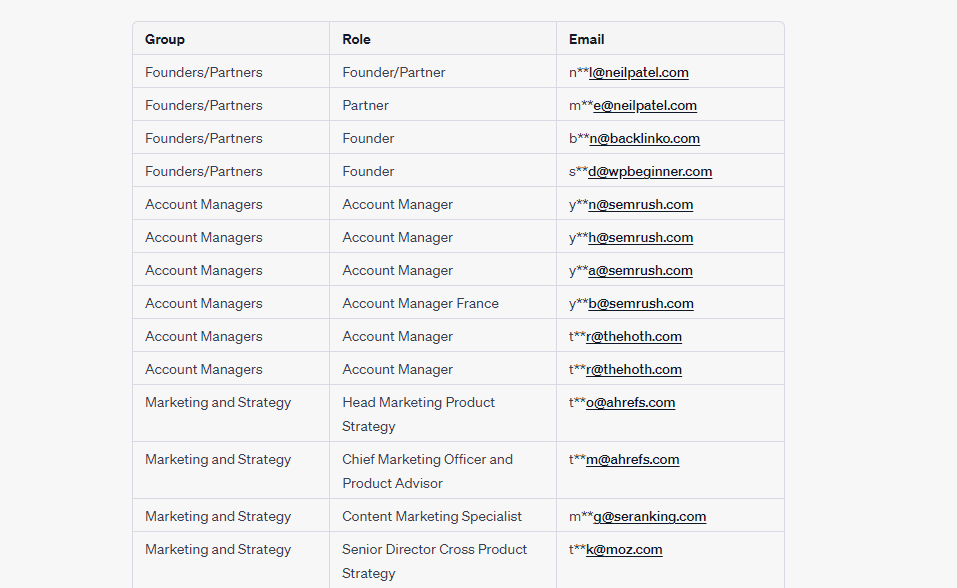
- Use ChatGPT to Craft Personalized Emails: With your segments ready, you can turn to ChatGPT to draft personalized outreach emails. Be sure to provide context and specific details about the prospects for optimal outcomes. (This is just example, there is a still a lot of work to fix this emails.)
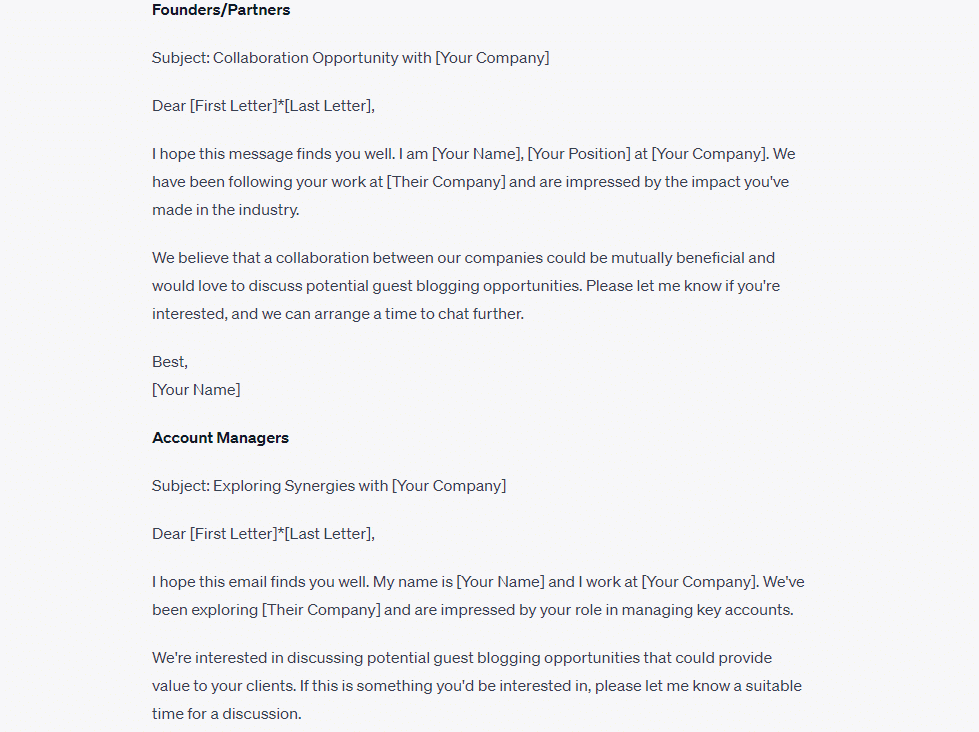
- Keep It Brief: Respect your prospect’s time by making your outreach emails concise. My personal target is to keep the message below 150 words.
- Always Follow Up: Prospects are often busy, and a follow-up or two (or even three) might be required to get their attention. Don’t be shy to nudge them politely.
- Always Provide Value: The golden rule of effective outreach is to always offer something of value in return. Think from your prospect’s perspective: “What’s in it for them?” Your offer should be compelling enough to motivate them to take action. Remember, you’re adding a task to their to-do list, so make it worthwhile!
These are some of the best practices for blogger outreach that can significantly enhance your success rate. Remember, our aim isn’t to churn out spam. We’re professionals striving to make the internet a less spammy, more value-driven place.
Step #8: Adjusting Your Strategy
The beauty of an effective link building plan lies in its adaptability. Remember, it’s not a rigid protocol, but rather an evolving approach that requires regular tweaking and fine-tuning. When things don’t pan out as planned, it’s an indication to reconsider your actions.
If you’re encountering too many negative responses, it’s time to revisit your outreach messages.

Not getting enough responses? Perhaps your offer lacks value or you’re targeting prospects with a higher website authority than ideal.
Check out my link building best practices below, they can offer you invaluable insights and guidelines.
Link building is a process, and like any process, it involves a learning curve. Not everything will sail smoothly from the get-go, but with consistent adjustments and learning from past interactions, you’ll be able to tailor a strategy that delivers optimal results for your industry.
Never lose sight of the core essence of link building: it’s about building connections, reciprocating value, and fostering collaboration.
If your approach is self-centric, you’re missing out on the true potential of link building.
Different industries have unique dynamics when it comes to outreach and messaging. As you delve deeper into your link building journey, you’ll unravel these specifics and fine-tune your approach accordingly.
For example, in SEO you can be more direct with your approach, as SEOs know what’s up, and going around will only hurt your chances.
Don’t be hesitant to experiment and learn from each step you take.
Remember, the path to securing high-quality backlinks may be paved with trial and error, but the results make the journey worthwhile.
As the saying goes, ‘Wisdom comes from experience.’ Each outreach, each response, and each link earned or missed, all contribute to your growing knowledge bank.
Embrace this journey with an open mind, a keen eye, and a resilient spirit. You’re not only building links but also relationships, reputation, and relevance in your industry.
Progress might seem slow at first, but each step brings you closer to your goal. Keep going, keep growing!
Link Building Best Practices
Link building is one of the most challenging parts of SEO as it requires a strategic approach and a keen understanding of best practices. Here are a few of my tried-and-tested guidelines to keep in mind:
- Start Building Homepage Backlinks First: If your site is small with limited content and backlinks, focus on building homepage backlinks first. This establishes a solid foundation for you to expand from.
- Focus on Building Branded Backlinks: Branded backlinks not only increase your brand visibility but also contribute positively to your domain authority.
- Follow the Anchor Text Ratio: Striking a balance in your anchor text distribution plays a crucial role in maintaining a natural link profile and avoiding search engine penalties.
- Never Repeat the Same Anchor Text: Avoid using the exact match anchor text repeatedly as it can come across as spammy and lead to penalties.

- Don’t Build More Than 1% Backlinks Weekly: Stick to a 1% maximum limit based on your total number of referring domains. For instance, if you have 100 referring domains, aim to build only 1 backlink a week.
- Always Build Backlinks on Websites with Organic Traffic: Ensure the website you’re seeking a backlink from has a decent traffic count (preferably a minimum of 1,000). This indicates the site’s credibility in Google’s eyes.
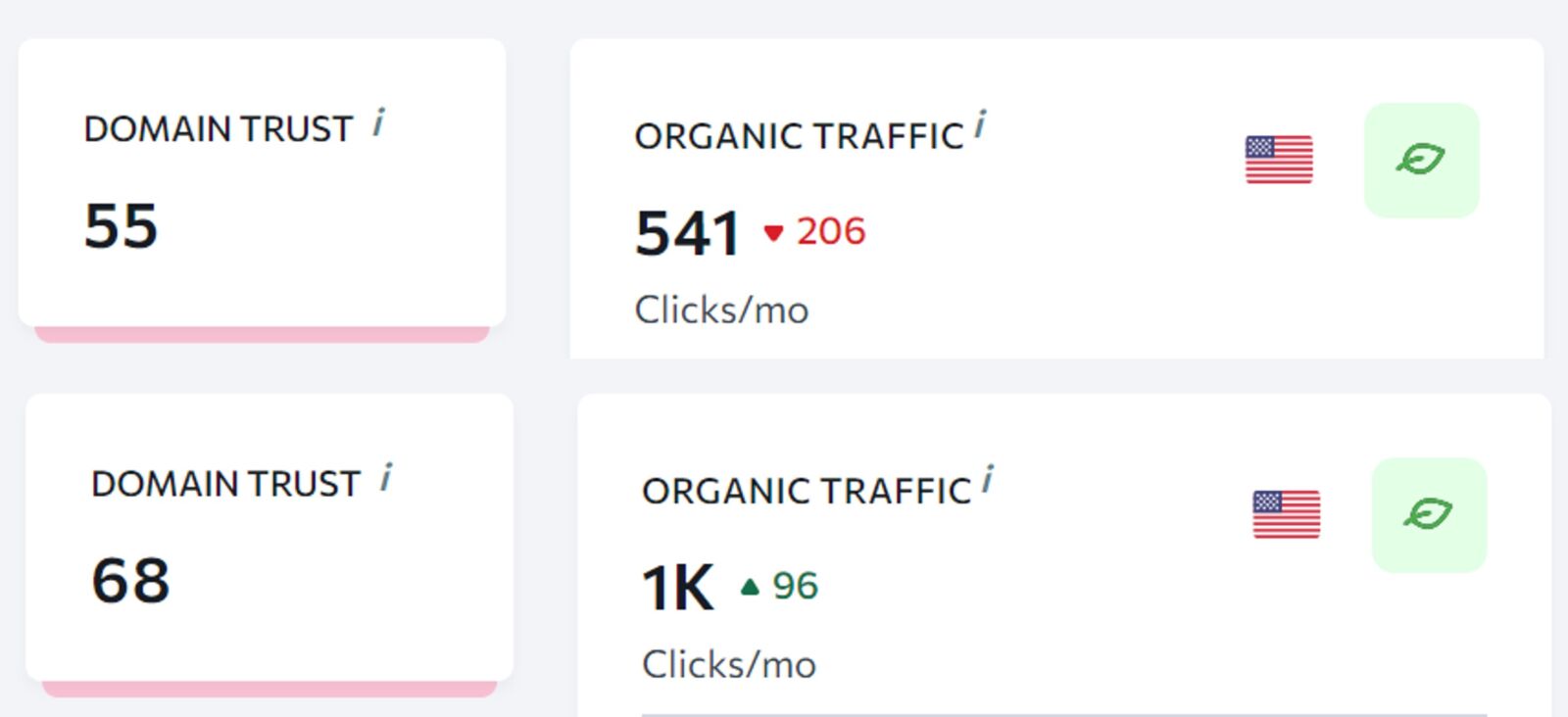
- Always Build Backlinks Only on Relevant Sites: Quality over quantity should be your mantra. Seek backlinks from sites relevant to your niche.
- Try to Only Get Backlinks From Content Relevant to Your Niche/Industry: This is paramount to maintaining relevancy and driving quality, targeted traffic.
- Focus On Website Location of Traffic: If your goal is to draw traffic from a specific country or region, consider the geographical location of your prospective linking sites.
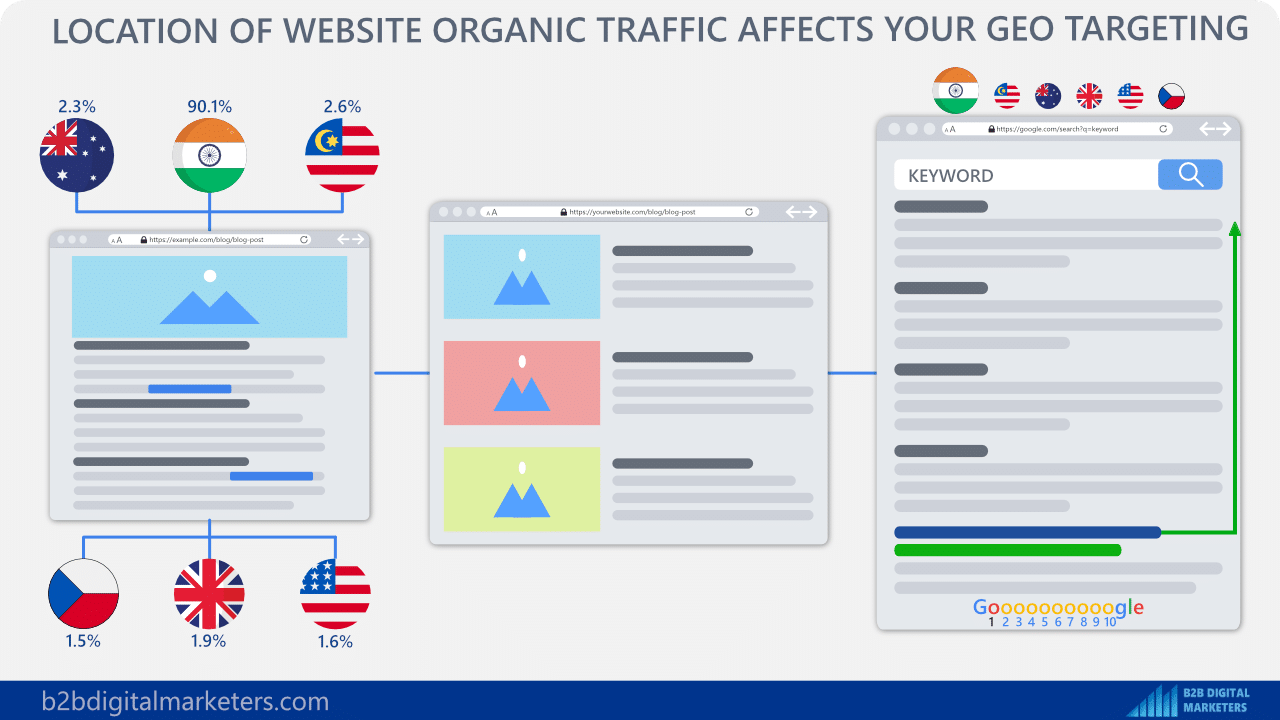
- Don’t Build More than 10% More Backlinks According to SERPs: Keep your backlink count within 10% of the referring domains of the top-ranking page for your target keyword.

- Reach Out to Prospects with Similar Website Authority: When initiating link building, target prospects with similar website authority (+/-10) to maximize mutual benefits.

- Monitor Your Backlink Profile Regularly: Regularly auditing your backlink profile allows you to weed out potentially harmful links and identify opportunities for improvement.
- Emphasize Quality Over Quantity: It’s better to have fewer high-quality, relevant links than a large number of low-quality, irrelevant ones. Google values relevance and the overall quality of your backlink profile over sheer volume.

- Stay Patient and Consistent: Link building is not a quick fix but a long-term investment. Stay patient and consistent with your efforts, and the results will come in due course.
- Diversify Your Link Building Techniques: Don’t put all your eggs in one basket. Make use of various link-building techniques to diversify your link profile and maximize results.
The world of link building is dynamic and calls for continuous learning and adaptation. These best practices should serve as your compass, guiding you toward effective and sustainable link-building strategies. Remember, the key to success is a perfect blend of strategy, persistence, and quality.
Why Is Link Building So Important?
Link building is a critical aspect of SEO strategy that provides numerous benefits. It plays a crucial role in boosting your website’s visibility, credibility, and ranking on search engine results pages (SERPs). Here’s a deeper dive into the benefits of link building and backlinks:
- Boosts Website Trust: Backlinks act as a “vote of confidence” for your website. When authoritative sites link to your site, it signals to search engines that your content is trustworthy and credible. This backlink benefit enhances search engines’ trust in your website, leading to improved rankings.
- Integral to SEO: Disregarding link building is equivalent to skipping a significant part of SEO. Links are among the primary factors that search engines use to ascertain your site’s relevance and authority. Without an effective link building strategy, you forfeit the chance to substantially boost your SEO performance.
- Offers High ROI: Although it may be challenging to directly measure the ROI of link building, the payoff can be substantial. A single high-quality backlink can significantly enhance your website’s domain authority and SERP rankings, leading to increased traffic and potential conversions. This is a major link building benefit.
- Crucial in Competitive Niches: In industries with fierce competition, link building is even more vital. Without it, distinguishing your site amidst the digital clutter can become an uphill battle.
- Establishes Market Presence: Link building is a potent way to carve out your presence in your industry’s search market. It raises the bar for competitors to outpace you and pilfer your valuable web traffic.
- Safeguards Against Competitors’ Advancement: By building a robust link profile, you not only improve your rankings but also erect a barrier for your competitors. The more quality backlinks you have, the more resources a competitor will need to match your site’s authority.
In summary, the benefits of link building are manifold, spanning from enhancing site trust to providing a competitive edge. As a critical part of SEO, neglecting link building can put businesses at a significant disadvantage in the digital landscape.
Conclusion
Link building is essential and having a proper link building plan will help you to get the best results out of your budget.
You should expect, that you will need to spend at least $1,000-$5,000 at first on your link building budget.
If you can, you want to outsource most of the link building as it is time-consuming. However, make sure to outsource it to a reliable and trustworthy link building agency or freelancer!
You definitely don’t want to cheap out on your link building as you would waste all your time and money and it would cost you more to fix it.
Good luck! Let me know how it goes for you!
Link building methods include Guest Posting, Broken Link Building, Skyscraper Technique, Resource Link Building, and HARO (Help A Reporter Out) Outreach. Each method involves reaching out to relevant websites to secure high-quality backlinks, increasing your site’s SEO ranking.
The three types of link building are Internal, External, and Natural link building. Internal link building involves linking to other pages within your own website. External link building is about acquiring links from other websites pointing to your site. Natural link building refers to links gained organically when other websites link to your content due to its quality or relevance.
The best way of link building is to combine active and passive strategies. Actively seek out opportunities through methods such as guest posting, HARO outreach, or resource link building. Simultaneously, create high-quality, valuable content on your site that naturally attracts backlinks because others find it useful or insightful. This combination ensures a diversified and effective link building approach.
Link building benefits include boosting your website’s trust with search engines, as backlinks serve as votes of confidence. It’s a critical component of SEO, and while it may be challenging to measure ROI, the payoff is significant when done right. In competitive niches, it’s nearly impossible to gain meaningful traction without link building. It helps improve your website’s ranking, establish your online presence, and make it harder for competitors to outrank you.
While some link building strategies can be executed for free, like creating high-quality content that naturally attracts backlinks, or manually reaching out for guest post opportunities, many methods can require a budget. Costs may arise from investing in SEO tools, hiring SEO professionals, or paying for high-quality backlinks. Therefore, while it’s possible to engage in link building with minimal expenses, many effective strategies involve some level of investment.
Related Articles:
- SaaS SEO Strategy Guide: A Step-by-Step Checklist with Best Practices
- What is SEO Pyramid? 55+ SEO Pyramid Best Practices
- SEO Lead Generation: How to Generate SEO Leads for Company
- B2B SEO Strategy for 2023: 8 Steps to Effectively Generate Leads and Organic Traffic
Also, check out our SEO hub page to find all our SEO Resources.
Disclaimer
This article was created by Eduard Dziak and may contain affiliate links. The following were used to optimize the article for the best user and search engine experience include:
- SE Ranking for keyword research and on-page SEO optimization
- Surfer SEO for SEO-friendly content creation for users and search engines.
- Jasper AI for grammar correction and information enhancement.
The article is based on the author’s own experience and knowledge, drawn from both their own work and that of their clients, to provide the latest, proven methods.








